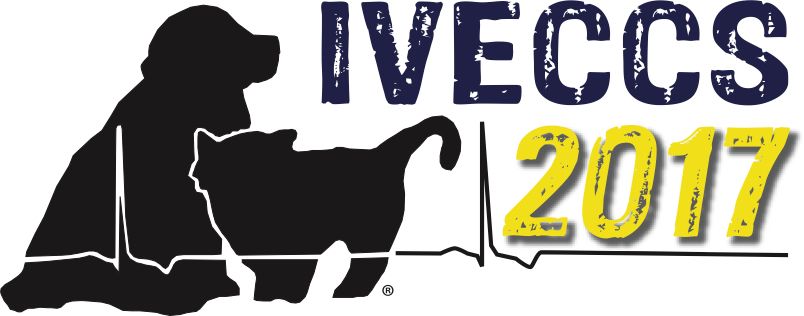IVECCS 2017: Temperature-Related Physical Modalities for Acute Pain in the ER
Acute pain control is best accomplished by using a combination of pharmacologic and nonpharmacologic modalities, including temperature-related therapies.

Pain is ubiquitous in the emergency room (ER), said Bonnie Wright, DVM, DACVAA, at the 2017 International Veterinary Emergency and Critical Care Symposium in Nashville. In fact, it’s the chief complaint of 75% of human ER patients. “For animals presenting to the ER, the presentation is often more system-specific,” noted Dr. Wright, “but the incidence is likely on par with that seen in human medicine.”
Dr. Wright, who practices in Colorado and offers consulting and physical medicine services in the state through mistralvet.com, stressed that pharmaceuticals such as opioids and nonsteroidal anti-inflammatories are a vital part of pain management in veterinary practice and that physical medicine is not meant to replace these medications. “But, there are limitations to our pharmaceuticals, and physical medicine is often a really nice contribution to some of those limitations,” she said. “They really do work hand in hand.”
Dr. Wright discussed several physical medicine modalities that are relevant for acute pain, including the temperature-related modalities (cold and hot therapy), tissue deformation, neuromodulation, stabilization of bones or joints, and type 1 muscle activation. “Ice and heat are a big deal,” Dr. Wright said.
Cryotherapy
Cryotherapy, or the superficial application of cold, is used to relieve acute pain from postoperative incisions and other injuries. “There is essentially not a surgery done in our hospital where we are not icing afterward every 6 to 8 hours for 15 to 20 minutes,” she said. Ice is also useful during rehabilitation to relieve exercise-induced inflammation and arthritic joint pain.
How does cryotherapy work to relieve discomfort? The application of ice causes cutaneous vasoconstriction, which reduces swelling, and decreases local tissue metabolism, oxygen demands, and vascular permeability. It relieves pain by slowing nerve conduction velocity directly and activating transient receptor potential cation channel, subfamily V (TrPV). Cryotherapy also reduces inflammatory mediators.
In addition, cryotherapy affects the musculature, such that it decreases spasticity associated with central nervous system damage, reduces muscle spasm, and stimulates activity in hypotonic muscles.
Cryotherapy tools include ice packs (gel packs, crushed ice, water-alcohol slushes, bags of frozen peas), ice massages with Dixie cups, and ice compression units (eg, Game Ready). In a 2011 study, Dr. wright noted that cold compression therapy was shown to decrease pain, swelling, and lameness and increase joint stifle range of motion (ROM) in the first 24 hours following tibial plateau leveling osteotomy in dogs.
Cryotherapy should be applied for a minimum of 10 minutes every 4 to 6 hours. To reduce edema, 20 minutes is ideal. As a general rule, deeper tissues cool more slowly, so icing for up to 30 minutes may be appropriate in some cases. Adipose is a poor conductor, so tissues that are deep to fat will require longer treatment times. Dr. Wright advised using caution in patients with compromised circulation or innervation, and thin tissues or exposed nerves.
Heat Therapy
Superficial heat therapy increases cutaneous blood flow and may improve healing after the acute phase, Dr. Wright noted. “After about day 3 following an injury, heat may be very helpful in improving the viscoelasticity of connective tissues,” she said. Heat also improves joint ROM and improves the flexibility of the joint capsule, tendons, and ligaments. “Warm tissues are more flexible,” Dr. Wright stated. Heat therapy also increases metabolism, which can speed healing.
Indications for heat therapy include decreased joint ROM or tendon/ligament flexibility, chronic pain, and edema without intrinsic heat. “It can also be used if exercise is not an option prior to stretching,” Dr. Wright said.
Hot packs used for thermotherapy can be rice packs, hot water bottles, clay packs, and hydrocollators (which provide moist heat). A pack that will cool gradually should be used, and an insulating layer should be placed between the patient and the hot pack. Thermal therapy should last for 15 to 30 minutes.
“Heat can be analgesic in more chronic pain cases,” said Dr. Wright. “If I use heat in touching the back of a dog with a disk injury, that dog is probably going to enjoy the heat.”
Podcast CE: A Surgeon’s Perspective on Current Trends for the Management of Osteoarthritis, Part 1
May 17th 2024David L. Dycus, DVM, MS, CCRP, DACVS joins Adam Christman, DVM, MBA, to discuss a proactive approach to the diagnosis of osteoarthritis and the best tools for general practice.
Listen
Podcast CE: A Surgeon’s Perspective on Current Trends for the Management of Osteoarthritis, Part 1
May 17th 2024David L. Dycus, DVM, MS, CCRP, DACVS joins Adam Christman, DVM, MBA, to discuss a proactive approach to the diagnosis of osteoarthritis and the best tools for general practice.
Listen
2 Commerce Drive
Cranbury, NJ 08512
All rights reserved.